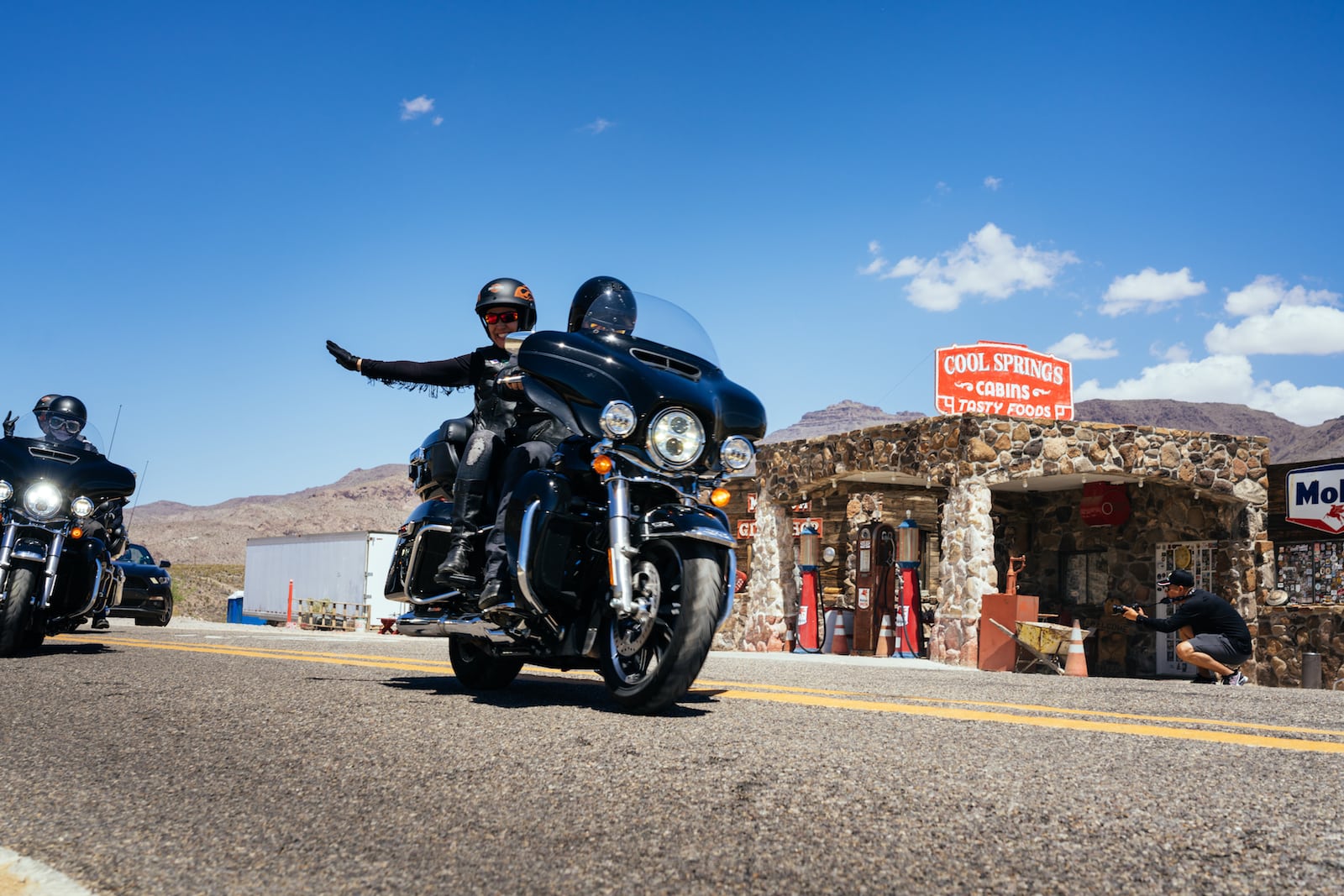
Ever wondered why Route 66 has captured the hearts of road trippers and adventure seekers across the globe? Route 66 isn't just a road; it's an iconic symbol of freedom, exploration, and the American dream. Stretching from Chicago to Santa Monica, this historic highway offers a unique glimpse into the soul of America, dotted with quirky roadside attractions, mom-and-pop diners, and breathtaking landscapes. But what makes it truly special? Well, it's the stories, the history, and the sheer variety of experiences that one can encounter along this legendary path. Buckle up as we hit the road to uncover 28 great facts about Route 66 that will make you want to pack your bags and embark on an unforgettable journey. From its inception to hidden gems along the way, get ready for a ride through time and culture, where every mile tells a story.
Key Takeaways:
- Route 66, also known as the "Mother Road," is a historic highway in the US that symbolizes American freedom and the road trip culture, connecting communities from the Midwest to the Pacific coast.
- Despite being decommissioned in 1985, Route 66 remains a popular destination, attracting travelers from around the world eager to experience its rich history and iconic landmarks.
What is Route 66?
Route 66, often dubbed the "Mother Road," is a historic highway in the United States that originally ran from Chicago, Illinois, to Santa Monica, California, covering a total of 2,448 miles. It has become a symbol of American freedom and the road trip culture, connecting urban and rural communities across the Midwest to the Pacific coast.
The Birth of Route 66
- Established in 1926, Route 66 was one of the original highways within the U.S. Highway System, serving as a major path for those migrating west, especially during the Dust Bowl of the 1930s.
Route 66 and the American Dream
- The highway has been immortalized in pop culture through songs, novels, and television shows, embodying the spirit of adventure and the pursuit of the American Dream. One of the most famous references is the hit song "(Get Your Kicks on) Route 66."
The Evolution of Route 66
- Over the years, Route 66 underwent numerous modifications to its route and was eventually decommissioned in 1985 when the Interstate Highway System rendered it obsolete. Despite this, large stretches of the old road remain, preserved and celebrated as historic routes.
Iconic Stops Along Route 66
-
Cadillac Ranch in Texas is an iconic art installation featuring ten graffiti-covered Cadillac cars buried nose-down in the ground. It's a popular stop for tourists looking to leave their mark.
-
The Blue Whale of Catoosa in Oklahoma is another beloved roadside attraction, originally built as an anniversary gift and now serving as a quirky photo op for travelers.
The Cultural Impact of Route 66
- Route 66 played a crucial role in the development of American roadside culture, leading to the emergence of motels, diners, and unique tourist attractions that catered to road-trippers.
The Decline and Revival of Route 66
- Despite its decommissioning, enthusiasts and preservationists have worked tirelessly to keep the spirit of Route 66 alive. In 1999, the National Route 66 Preservation Bill was signed into law, providing financial assistance for preserving and restoring historic features along the route.
Route 66 in the Modern Era
-
Today, Route 66 has experienced a resurgence in popularity, attracting travelers from around the world eager to experience this slice of American history. Many businesses along the route have thrived thanks to this renewed interest.
-
The Route 66 Road Ahead Partnership, established in 2015, aims to revitalize and promote the economic development of communities along the historic highway.
Fun Facts About Route 66
-
Route 66 crosses eight states and three time zones, making it one of the most diverse road trips in the United States.
-
The route is also known as the "Will Rogers Highway" after the famous American actor and humorist.
-
In 1984, Route 66 was officially removed from the United States Highway System, but its legacy continues to grow.
-
The first McDonald's restaurant opened in 1955 in Des Plaines, Illinois, near Route 66, marking the start of the fast-food revolution in America.
-
The Wigwam Motels along Route 66, with their unique teepee-shaped rooms, offer a nostalgic lodging experience for travelers.
-
The Historic Route 66 Association of Arizona was the first state Route 66 association, founded in 1987 to advocate for the preservation and promotion of the highway.
-
The Route 66 Museum in Clinton, Oklahoma, offers visitors a comprehensive history of the highway, including vintage cars and memorabilia.
-
Route 66 has inspired numerous creative works, including John Steinbeck's novel "The Grapes of Wrath," which referred to it as the "Mother Road."
-
The annual Route 66 International Festival celebrates the culture, history, and legacy of the highway, drawing fans from across the globe.
-
The Route 66 Marathon, held in Tulsa, Oklahoma, is a tribute to the historic road, featuring a course that takes runners through some of the city's most scenic neighborhoods.
-
The Cozy Dog Drive In in Springfield, Illinois, claims to be the birthplace of the hot dog on a stick, a popular snack for Route 66 travelers.
-
Tucumcari, New Mexico, is known for its vibrant neon signs, many of which have been restored to their original glory to preserve the classic Route 66 vibe.
-
The Santa Monica Pier in California marks the traditional end of Route 66, with a commemorative "End of the Trail" sign greeting visitors.
-
Oatman, Arizona, a former mining town along Route 66, is famous for its wild burros that roam the streets, adding to the route's quirky charm.
-
The Gemini Giant in Wilmington, Illinois, is one of the many "Muffler Men" statues along Route 66, standing as a towering figure holding a rocket ship.
-
The Painted Desert and Petrified Forest National Park in Arizona offers some of the most stunning natural landscapes along Route 66.
-
The Snow Cap Drive-In in Seligman, Arizona, is known for its humorous signs and vintage decor, embodying the playful spirit of Route 66.
-
The Powerhouse Visitor Center in Kingman, Arizona, serves as a museum and information hub for travelers exploring Route 66.
-
Route 66 has been designated as a National Scenic Byway in several states, recognizing its historical and cultural significance.
A Final Cruise Down Memory Lane
As we cruise to the end of our Route 66 journey, it's clear this iconic highway offers more than just miles of pavement. It's a vibrant tapestry of American history, culture, and adventure. From the neon signs flickering in the night to the classic diners serving up slices of Americana, Route 66 has captured the imagination of travelers for generations. Whether you're a history buff, a road trip enthusiast, or just someone looking for a slice of classic Americana, this historic route promises an unforgettable journey through the heart of the U.S. So, grab your map, hit the playlist, and let the spirit of Route 66 guide you through an exploration of scenic landscapes, timeless attractions, and stories that paved the way for modern road trips. Here's to the Mother Road, an enduring symbol of freedom and discovery.
Frequently Asked Questions
Was this page helpful?
Our commitment to delivering trustworthy and engaging content is at the heart of what we do. Each fact on our site is contributed by real users like you, bringing a wealth of diverse insights and information. To ensure the highest standards of accuracy and reliability, our dedicated editors meticulously review each submission. This process guarantees that the facts we share are not only fascinating but also credible. Trust in our commitment to quality and authenticity as you explore and learn with us.


